Tea enjoyment is not just a habit but an art, a philosophy of life. Vietnamese tea culture, while simple and rustic, carries distinct subtleties that set it apart from the tea cultures of Japan or China. The sense of closeness, warmth, and community is what defines the unique identity of Vietnamese tea culture. From the preparation stages to savoring the last sip, every detail embodies a respect for and immersion in nature.
1. The Time and Space of Vietnamese Tea Enjoyment
“Time” and “space” are two crucial factors in Vietnamese tea culture. Choosing the right time and suitable space helps tea drinkers achieve relaxation and peace of mind, enhancing the bond between participants.
1.1. Time for Tea Enjoyment
Tea drinking is a way to relax the mind, nurture the spirit, and create bonds among people. The ideal time for tea enjoyment is when you have some free time, not influenced by work or other worries. Only then can one fully appreciate the profound flavor and meaning of tea.
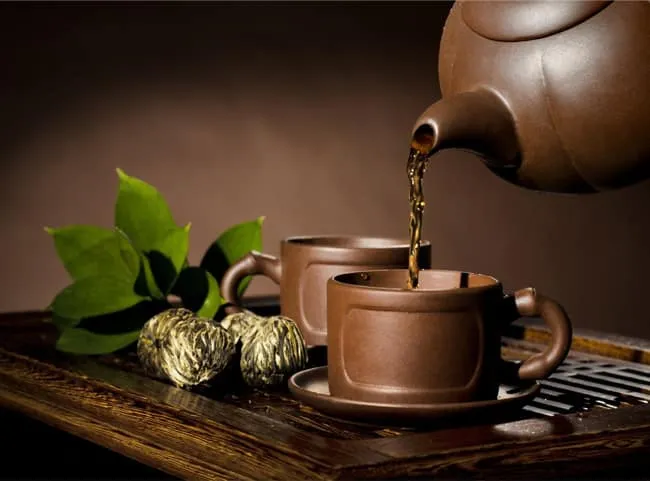
Time for tea drinking should also be considered for health reasons. The principle of “not drinking tea on an empty stomach” is a typical example. Caffeine in tea can lead to negative reactions such as dizziness, nausea, and stress if consumed on an empty stomach.
The ideal time to enjoy tea is after meals, especially in the morning. Tea aids the digestive system in working more effectively. However, it’s best to avoid tea consumption before bedtime, as caffeine can cause insomnia.
1.2. Space for Tea Enjoyment
The space where Vietnamese people enjoy tea is often associated with simplicity and rustic charm. This could be a tranquil garden, an elegant living room, or even a breezy field. Wherever it is, the space should evoke feelings of comfort and warmth.
In indoor spaces, often referred to as still spaces, the decor tends towards simplicity, warmth, and harmony. Old-style paintings or ancient landscape can be used to enhance traditional beauty. Decorative colors should be gentle, avoiding anything flashy or ostentatious.
The tea table and seating arrangements are crucial elements in the tea space. Traditionally, tables and chairs were made from wood or bamboo. Today, sculptured stone blocks or sofas can be used for more comfort and convenience.
In garden spaces or open areas, additional decoration with bonsai trees or fresh flowers can enhance natural beauty. However, the spirit of simplicity is always prioritized. Sometimes, a tea space before the porch or out in the field needs no elaborate decoration.
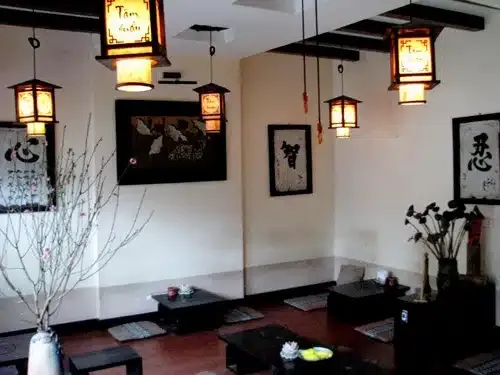
2. Vietnamese Tea Enjoyment Practices
Brewing a good cup of tea is an art, but enjoying tea correctly is equally important. Tea enjoyment combines all senses—from the spirit and physical presence to the surrounding scenery and each stage of preparation and tasting.
2.1. The Common Way to Brew Vietnamese Tea
In Vietnamese tea culture, the essential elements of tea making are captured in the saying: “First water, second tea, third cups, fourth teapot, and fifth companionship.”
First Water
Water is the top priority when brewing tea. The ideal tea-brewing water is pure, avoiding tap water or mineral water. In ancient beliefs, dew gathered on lotus leaves is deemed the best water for brewing tea.
After collecting the water, it should be boiled. One can use a clay pot or any regular kettle. The water temperature should match the type of tea to achieve the best flavor.
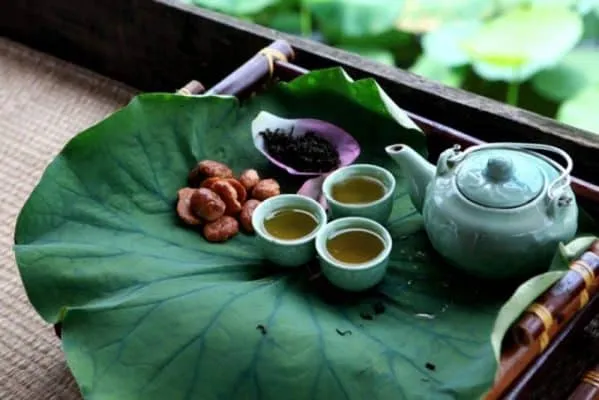
Second Tea
There are many types of tea, from fresh to buds to dried tea. Fresh and bud teas are often favored for their aromatic and authentic flavors.
Dried teas include white tea, green tea, black tea, and more. The flavor depends on processing techniques and other factors like soil, climate, and care methods.
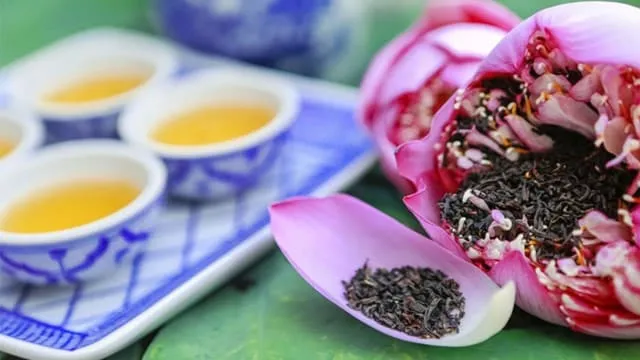
Third Cups and Fourth Teapot
Tea utensils like teapots and cups play important roles in tea culture. In Vietnamese culture, cups with rounded eyes and seed-shaped cups are often used. They are small, perfectly sized for sipping tea.
There are many styles and materials for teapots, such as ceramic, porcelain, clay, glass, etc. Choosing the right teapot to match the tea type, style, and aesthetics of the brewer is crucial, as different teapots can yield different tea flavors.
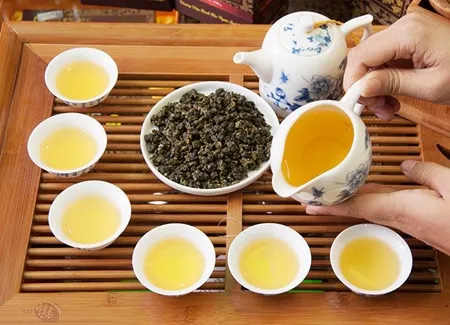
Before brewing, rinse the teapot and cups with boiling water to cleanse and warm them, enhancing the tea taste.
Then, add an appropriate amount of tea to the teapot, pour hot water to cover the tea, and discard it. This step rinses the tea to remove impurities.
Next, pour fresh hot water into the teapot, cover it, and optionally pour a little hot water over the lid to retain heat. Steep the tea for about one minute (depending on the tea type) before serving it in cups.

Fifth Companionship
“Companionship” refers to those enjoying tea together. They could be honored guests, business partners, or close friends.
When pouring tea, it’s advisable to use a communal cup for consistent taste. Pour tea from the teapot into the communal cup, then into individual cups.
When offering tea, start with the elders to show respect. To fully savor the tea flavor, tea drinkers should employ sight, smell, taste, and touch.
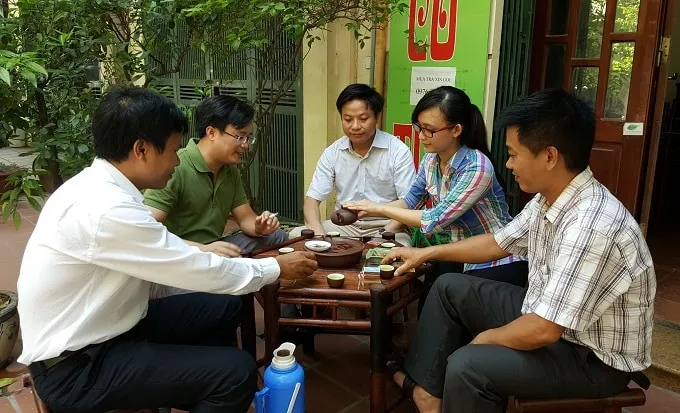
2.2. Ways to Enjoy Vietnamese Tea
After brewing a delightful teapot of tea, people gather to enjoy it. There are three main forms of tea enjoyment: single sipping, peer sipping, and communal sipping.
2.2.1. Forms of Tea Enjoyment
Single Sipping
Single sipping is enjoying tea alone. The tea drinker sips tea while pondering life. This form is favored for the quiet space it provides to relax and reflect.

Peer Sipping
Peer sipping, also called pair sipping, involves two individuals. The pair enjoys tea and discusses various topics, from tea culture to work to life.
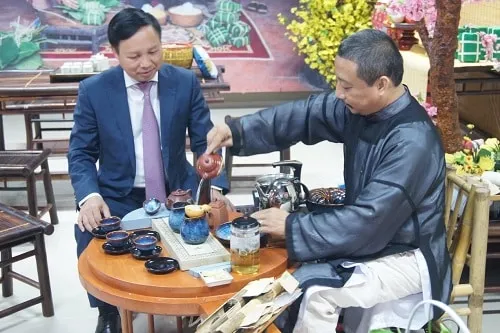
Communal Sipping
Communal sipping involves three or more people. This form is popular during festivals, family gatherings, or when guests visit. The group enjoys tea together and engages in heartfelt conversations.
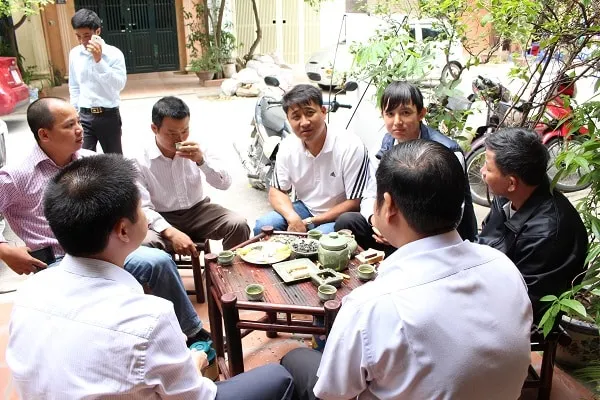
2.2.2. Techniques for Tea Enjoyment
There are many considerations in enjoying tea to ensure gestures are precise and graceful. From the way of holding a cup, pouring tea to inviting guests, each action reflects respect and subtlety.
Cup Holding Technique
The correct way to hold a cup is called “three dragon support pearl.” The tea drinker uses three fingers: the thumb, index finger, and middle finger to hold the cup. The index finger and thumb lift the cup’s rim while the middle finger supports the cup’s base.
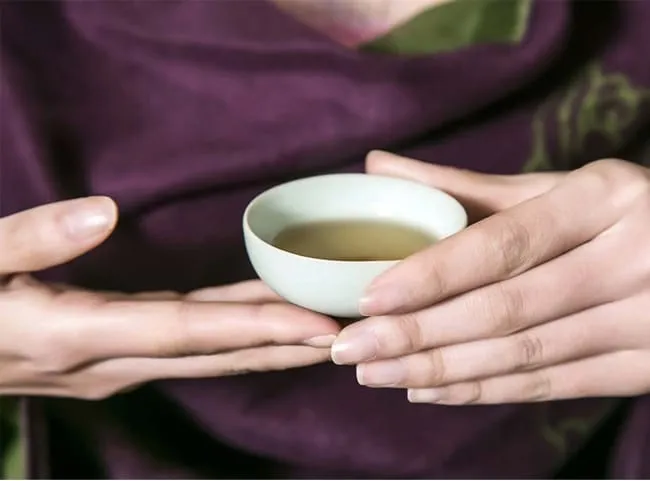
Tea Invitation
Inviting tea is a gesture of reverence to the one being served. Use both hands when offering tea. With cups without handles, the inviter supports the cup with both hands. With handled cups, one hand holds the handle while the other supports the cup.
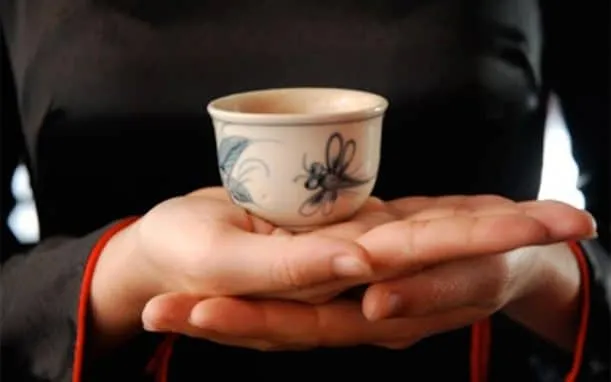
Tea Sipping Method
The tea drinker slowly brings the cup to their nose to take in the aroma. Then, sip small amounts of tea, gradually sensing the flavor on the tongue, and allowing it to spread throughout the mouth and throat.
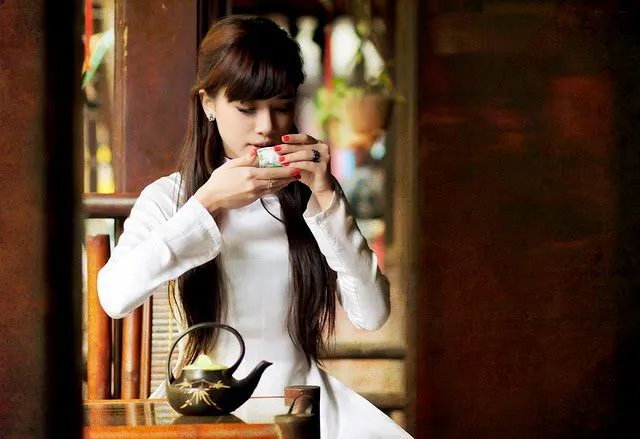
Pouring Tea for Subsequent Rounds
After the first round of tea, the brewer continues to refill. With less hot water and steeping time reduced to 30-45 seconds to avoid diluted taste. Typically, one should brew up to three rounds to maintain optimal flavor.
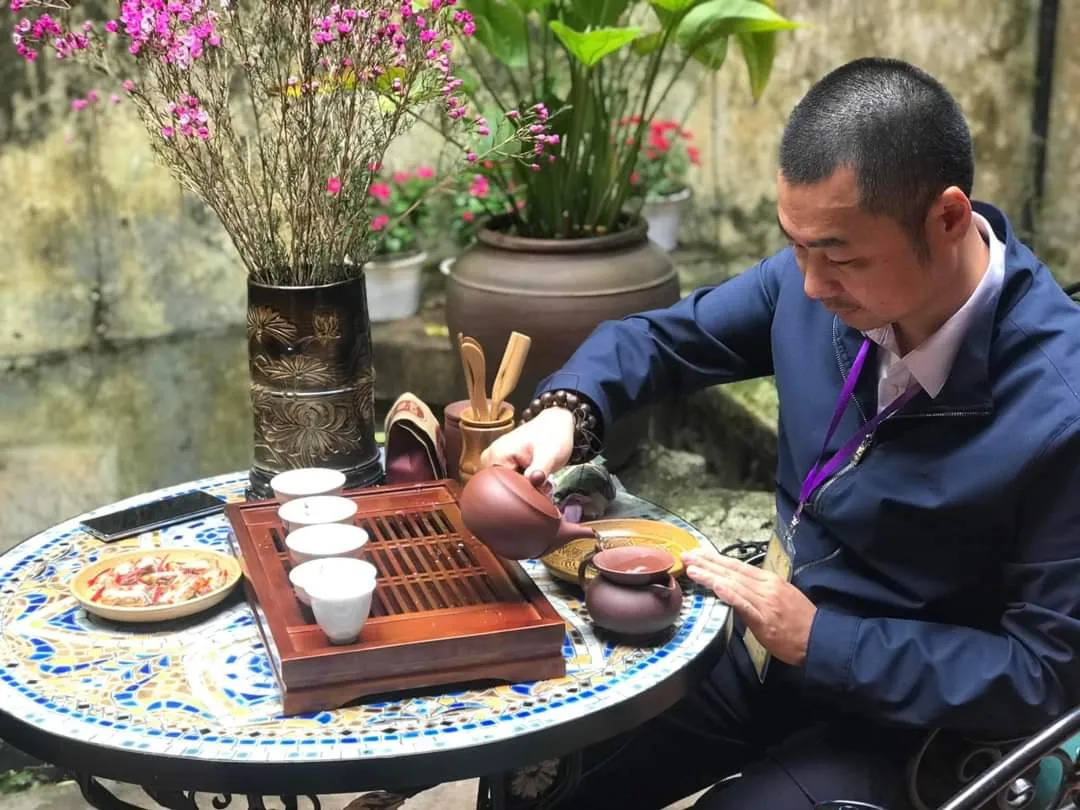
Each country has its own rules for tea enjoyment. Vietnamese tea culture, while not overly elaborate, possesses a distinct identity and leaves a lasting impression on those who experience it. The simplicity, subtlety, and spirit of community bonding are core values that define the beauty of Vietnamese tea culture.